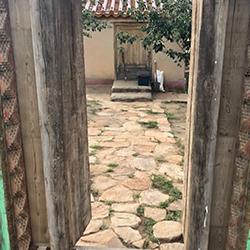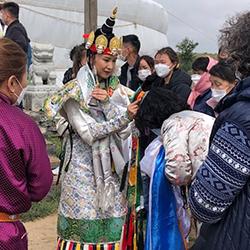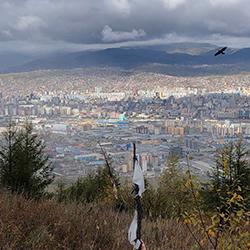Fieldwork
I conducted my doctoral fieldwork during the year of 2021-2022 in Mongolia.
My research focused on postsocialist elites. The fieldwork period was divided between time spent in the capital city and travelling to a popular Buddhist monastery located in a rural province. The reason religious institutions, rituals and high incarnate monks figure a lot in my work about elites is due to my subjects wanting to be Buddhist person and re-discovering their “authentic” Mongolian values and culture through religion. By claiming to be a devotee of a particular guru many of them adhere to either the dominant Gelug school or, various other Buddhist sects. Although my initial interest was in rituals of wealth generation and protection, as the fieldwork progressed, I discovered that the entanglement of my subjects with institutions of the “magical” high incarnate monks, khutugtu khuvilgaan are entangled far beyond pure economic interests, extending to matters of geopolitical and ideological nature. As I write my dissertation the occasional examination of photos, which I shot with my mobile phone, transpose me back to the spatial and temporal dimensions of the field. However, ontologically speaking the photographic images contain many of the ambiguities of the “field” and in this way, they continue to challenge and even threaten the smooth construction of my ethnography.
“To build a temple outside is easy. To build a temple within is far more difficult.”
(Mongolian Father-Guru Deva Rinpoche Teaching)
The photo depicts a doorway to a small abode with an attached toilet where the right disciple spent three years, three months and three days in a great retreat termed Nenchen. During Nenchen the disciple cultivates sharp attentiveness and alert control of the self. The retreat is also one of the most creative periods in a disciple’s life as they create poetry, songs and other art forms while also harnessing tantric power through bridging their distance to the Guru Yidam’s heart, a key to their magical abilities. The image is shot with iPhone 7 camera. Southern province, Mongolia.
Dagina
Dagina in Mongolian (also Khandarmaa in Mong. Sans. ḍākinī) is a cosmic being and sky goer who can manifest as a tantric female Buddha. In Vajrayana Buddhism, the Daginas such as Narhajid (Sans. Vajrayogini) represent the power to realize and tame one’s hubris to attain ultimate wisdom and knowledge-based power (Mong. erdem). In this photo, a Dagina is seen giving a blessing to a lay Buddhist follower after her tantric ritual dance. While Tsam dances (Tib. Cham) are dominated by male monks and in pre-revolutionary Mongolia made up part of the state rituals, the female tantric dances are novel inventions promoted by one local monastery thus recognizing the crucial role of female goddesses in the attainment of tantric power.
Ulaanbaatar
The city of Ulaanbaatar went through several epochal transformations including, its religio-historical foundation rooted in building the largest ecclesiastical settlement of several monasteries based on the institution of the Jebzundamba Khutugtu(patriarch of Mongol Buddhism and for a brief period theocratic King of Mongolia); renaming into Ulaanbaatar (trans. Red Hero) during seventy years of state-socialism, and finally becoming the seat of capitalist aspirations. In this photograph, a stick of prayer flags foregrounds the city landscape. The capital city has been expanding rapidly thus aggressively pushing the boundaries of the cosmological. Surrounded by the four sacred mountains which are believed to be inhabited by powerful deities and spirits but also housing the bio-diverse ecosystem of the Bogd Khaan mountain, the city continues to grow within, unable to overcome pollution and over-crowding.



